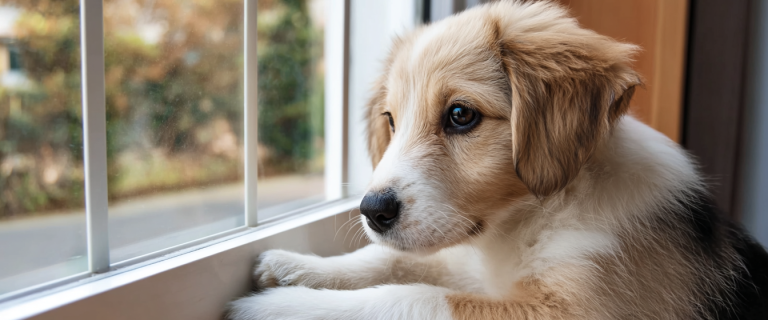How do you help your dog feel secure at home, especially when he just seems uneasy and nervous all the time? Home is a place of comfort and security – a place we look forward to going at the end of the day to relax and rejuvenate. That’s why it’s even more heartbreaking when you have a dog who doesn’t seem to feel at ease and secure at home – it should be the place he is most comfortable.
It’s virtually impossible to know your dog’s history, and it’s not as though he can tell you, so you have to use your sleuthing skills to get an idea of what causes him stress. Read his body language and observe his nuances; getting a better idea of what’s bothering him will help you determine how best to help him. Without my knowing the specifics of your dog, here are some tried and true ways to help him feel more secure at home.
Help Your Dog Feel More Secure at Home
- Create a routine. Dogs thrive on routine, and if you’ve got a nervous pup, one of the simplest ways to help her is to keep her on a schedule. From going outside to relieve herself at reasonable intervals to eating at the same time each day, she needs to know what she can expect, and she needs to know she can depend on you to take care of her.
- Meet his basic needs, but don’t stop there. You feed your dog and give him water, but are you also giving him plenty of snuggles and playing with him on a regular basis? Being social animals, dogs can easily get lonely and that increases their anxiety. Build cuddle and play time into your regular daily routine so you and your dog can form a bond and create a trusting relationship. It can be as simple as cuddling with your dog in the evening while watching TV – that’s what I do!
- Give her space. Seems contradictory to the last point, doesn’t it? I’m not referring to personal space but rather physical. Providing your dog with a space of her own with a comfy bed and toys will help her feel like she has some control over her environment. When she’s lying in her spot, leave her alone. This is the one space in the house that is truly hers, so make sure to keep your kids from bothering her when she’s chosen to take a break.
- Don’t yell at him. It’s easy to fall into a pattern of yelling at your dog when he’s naughty, but it doesn’t do any good. He doesn’t understand why you’re yelling at him; all he understands is that you’re angry. When disciplining your dog, use a firm voice, but stay calm. Yelling only erodes his ability to trust you.
If you try these tips and your dog still seems anxious and nervous at home, visit the vet. It’s always a good idea to make sure there isn’t an underlying medical condition causing your dog added stress, but if nothing else, your vet may have additional recommendations that could work well for you and your dog.



